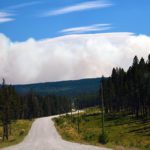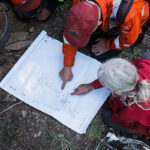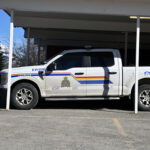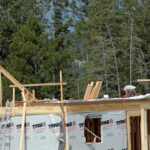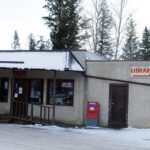Home »

Hi-tech warnings to help prevent wildlife collisions
The Government of B.C. will be testing new high-tech wildlife detection systems on Highway 3 between Cranbrook and the Alberta border to better warn motorists about the potential for wildlife collisions.
Minister of Transportation and Infrastructure Todd Stone made the announcement during a Cranbrook and District Chamber of Commerce-hosted luncheon today (June 25) at the Heritage Inn.
“Collisions between vehicles and large wildlife can be very serious for both motorists and animals. This new system will use technology to warn motorists when large animals are approaching the highway. Using this system will help save the lives of motorists and wildlife, and help make our highways safer,” Stone stated.
The Elk Valley to Cranbrook “is pretty much ground zero” for vehicle/wildlife collisions in the province, he said, adding the Sparwood area has “by far” the highest rate of collisions with elk in B.C.
To help make his point, Stone asked the approximately 60 people at the luncheon to raise their hands if they had ever been involved in a collision with wildlife. Roughly 75% of those in the room raised their hands.
From 2004 to 2012, Highway 3 from Cranbrook to the Alberta border had the highest elk and deer mortality rates in the province. Deer are consistently present in large numbers, and elk congregate in the area from late fall to early spring.
On Highway 3, large wildlife represents a significant hazard to drivers. Many workers commute on Highway 3 between the communities in the Elk Valley and the mining sites each day. During the winter, thousands of skiers from B.C. and Alberta travel into the region to enjoy world-class skiing.
The new wildlife detection systems will use sensors to identify large wildlife approaching the shoulder of the highway. When a large animal is detected, the system will trigger flashing lights on a warning sign to alert drivers of the potential hazard ahead. Drivers can lower their speed and take appropriate steps to reduce their chances of hitting the animal. Presently, conventional wildlife warning signs are used to advise drivers of potential hazards.
“The prevalence of wildlife throughout the Kootenays is significant,” Stone said.
The wildlife detection systems will be installed at two locations beginning in 2015. The two systems will cost approximately $1.5 million. This pilot project is a recommendation resulting from the B.C. government’s Rural Highway Safety and Speed Review, and data from these sites will be used to determine if this is a viable option for other sites around the province. Additional recommendations from the review will be announced in the coming weeks.
“We’re testing this innovative wildlife warning system to make travel on Highway 3 safer for residents, commuters and visitors. Just as importantly, this system will help protect the elk, deer and other wildlife with which we share this beautiful corner of the province,” said Kootenay East MLA Bill Bennett.
Approximately 70% of elk fatalities on Highway 3 near Sparwood occurred between October and March, a period when driving conditions are most challenging with less daylight and winter conditions.
Approximately 60% of deer fatalities on Highway 3 occurred between April and September, when many tourists are travelling through the area.
An adult bull elk can weigh as much as 315 kg (700 lb) and a large adult bull moose can approach 700 kg (1540 lb). By comparison, a subcompact sedan weighs approximately 1,100 kg (2400 lb), and a motorcycle weighs between 200 and 350 kg (440 – 770 lb).
The two pilot project detection systems, which utilize radar and sensors to warn drivers of wildlife on the road ahead, will be located along Highway 3. One is to be placed east of Sparwood and the other east of Cranbrook.
Lead image: Kootenay East MLA and Minister of Energy and Mines and Minister for Core Review Bill Bennett, Cranbrook and District Chamber of Commerce President Dave Butler and Minister of Transportation and Infrastructure Todd Stone following this afternoon’s luncheon at the Heritage Inn.
Ian Cobb/e-KNOW
